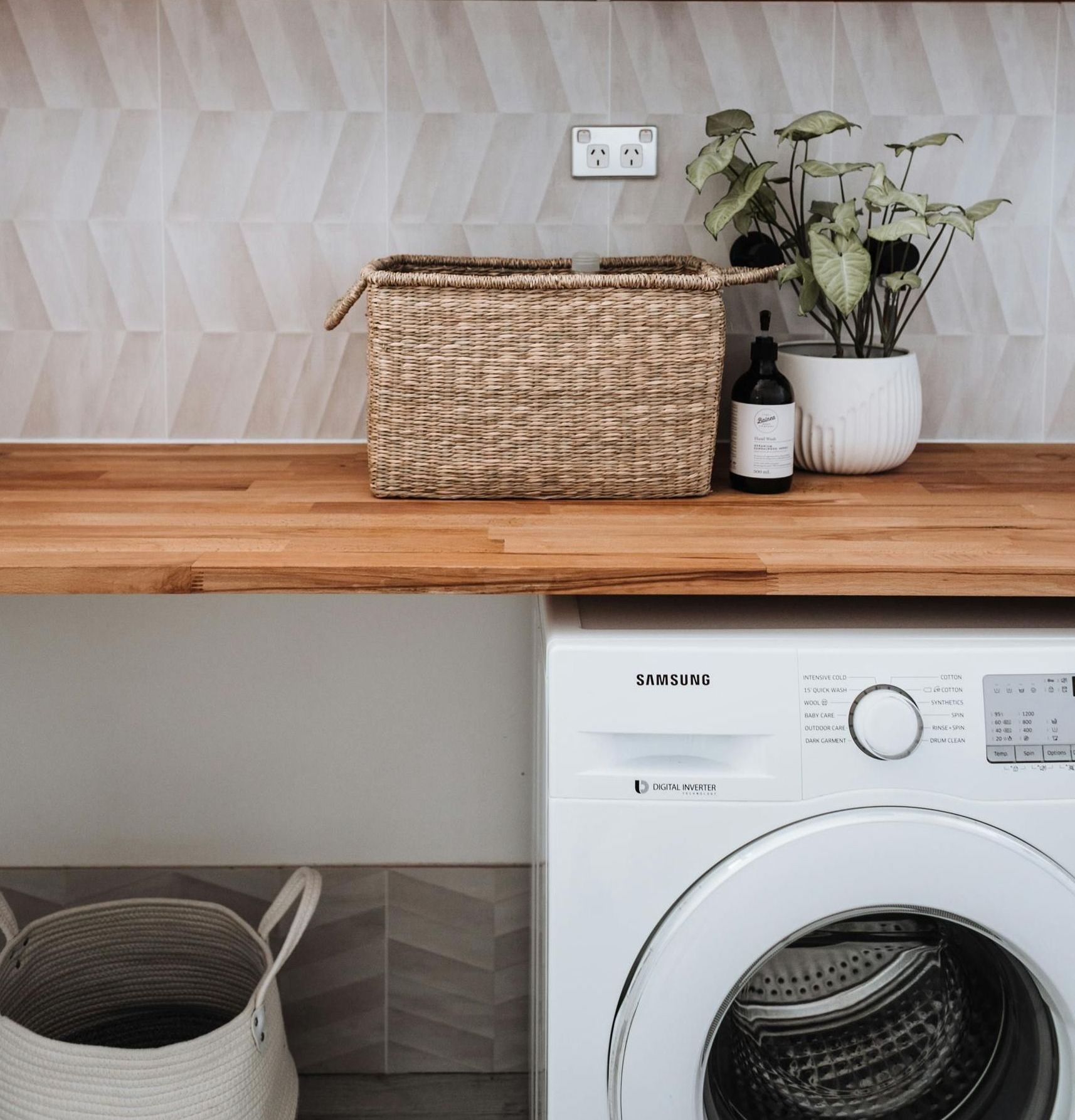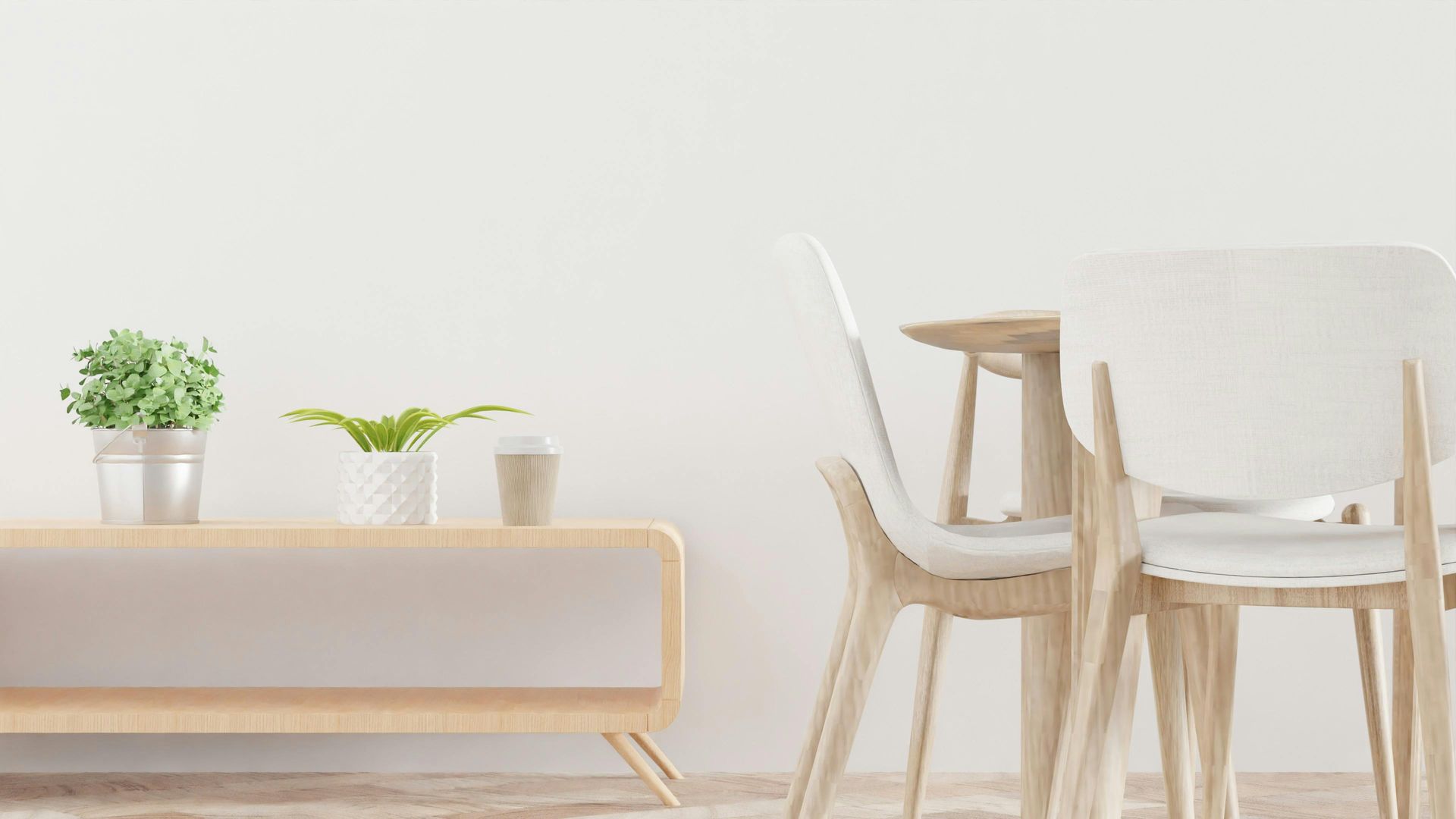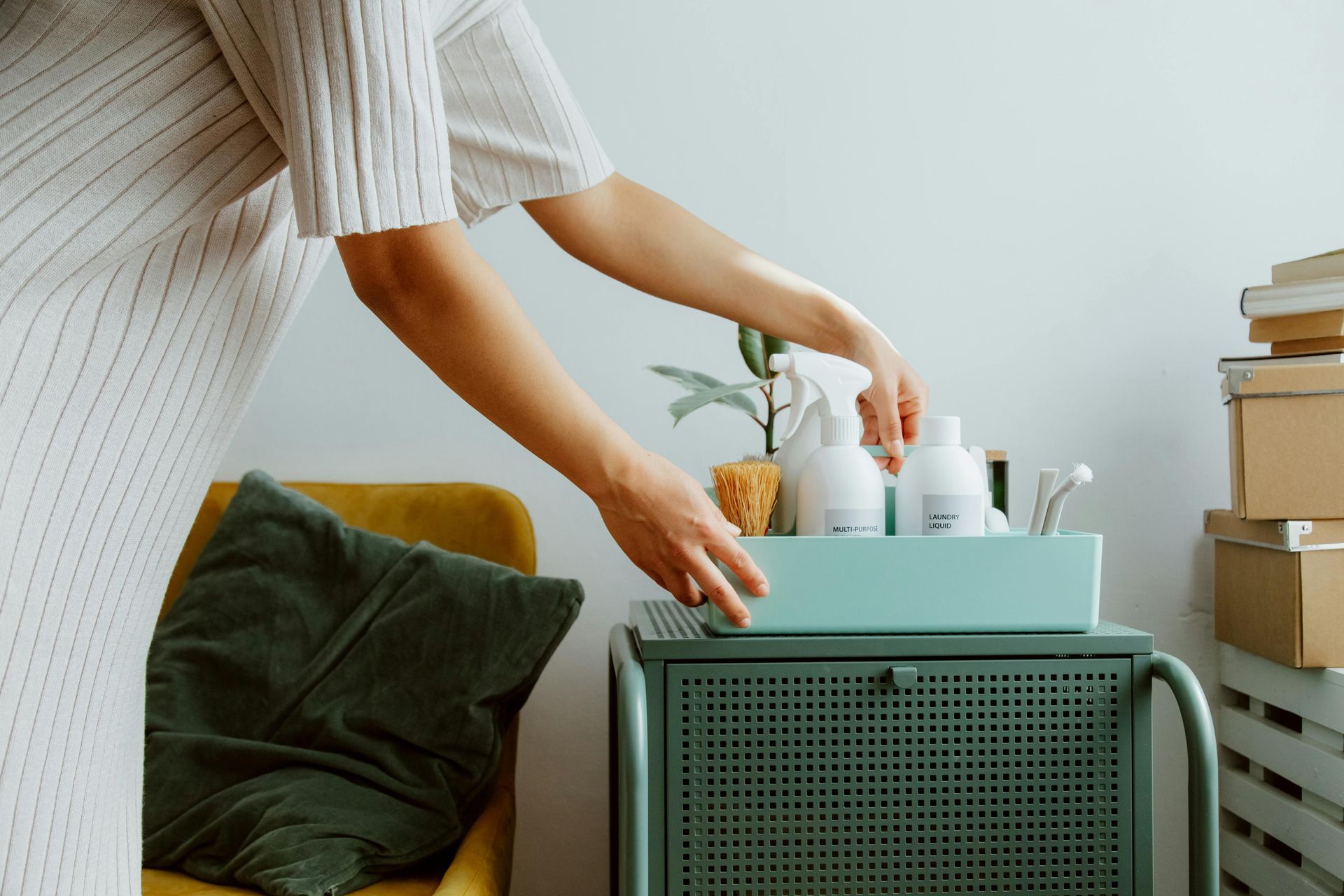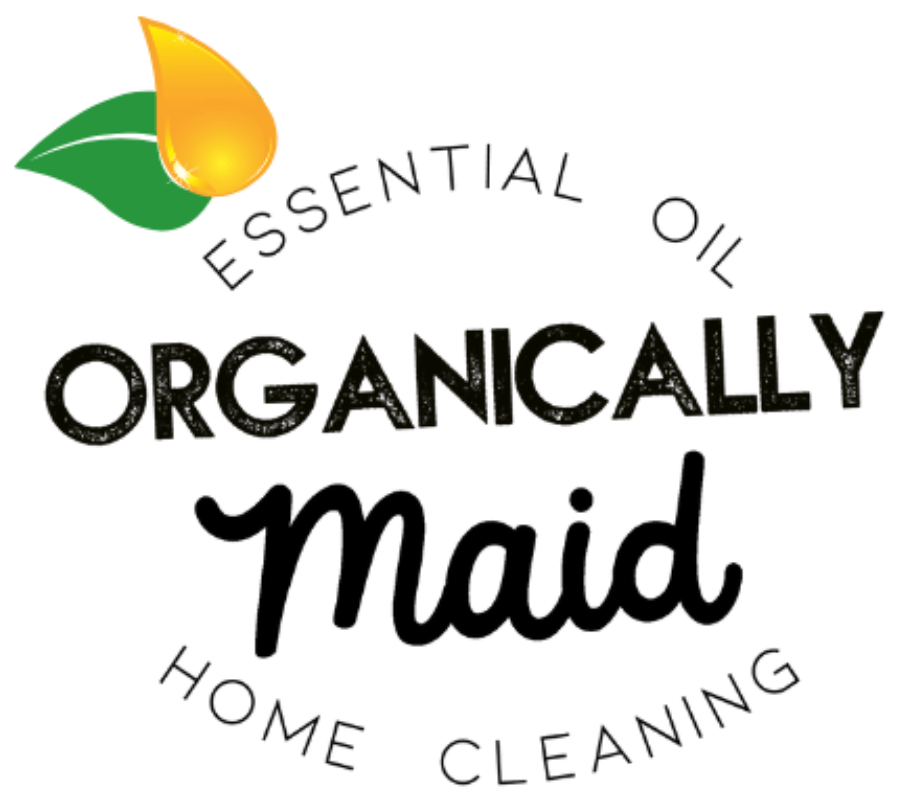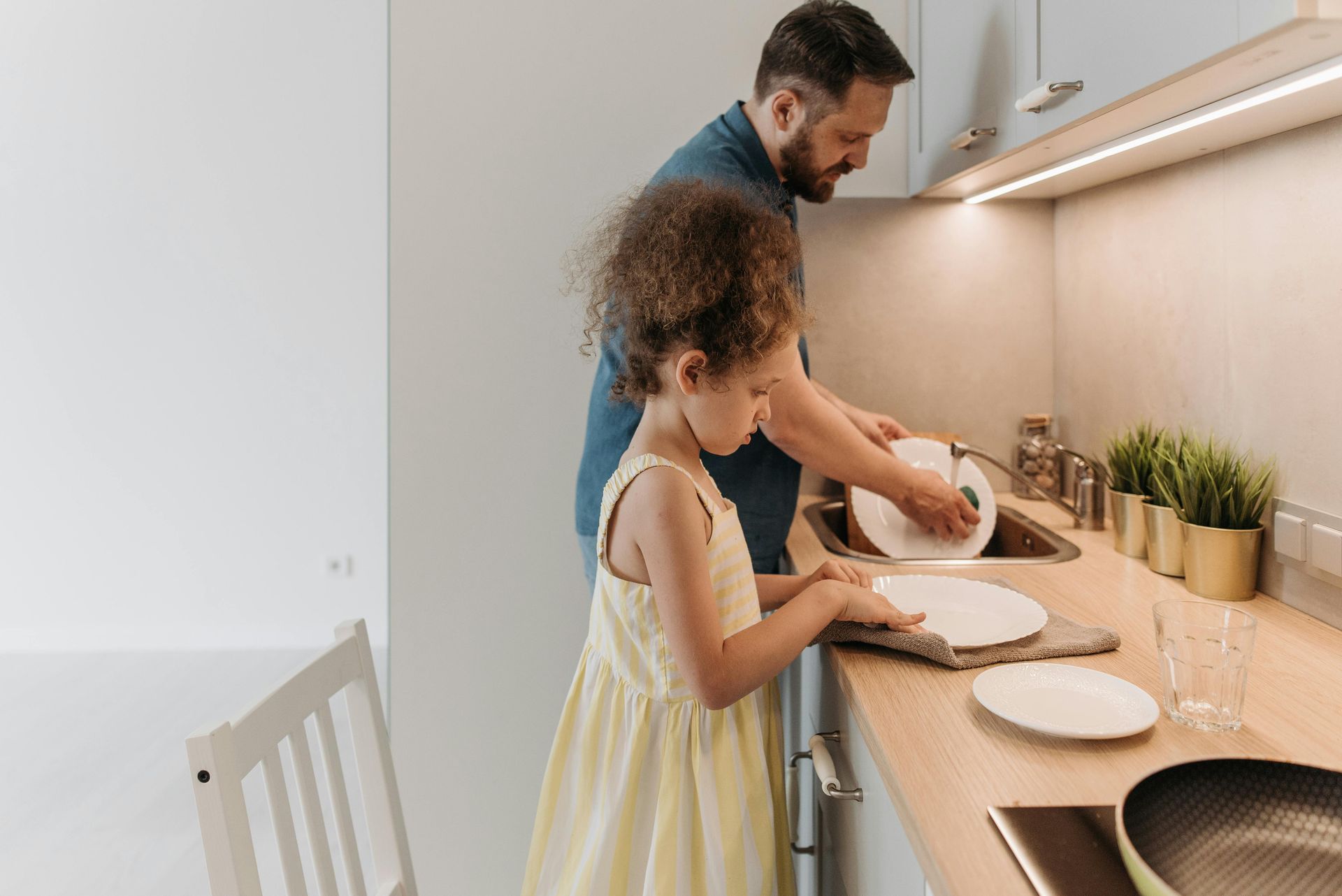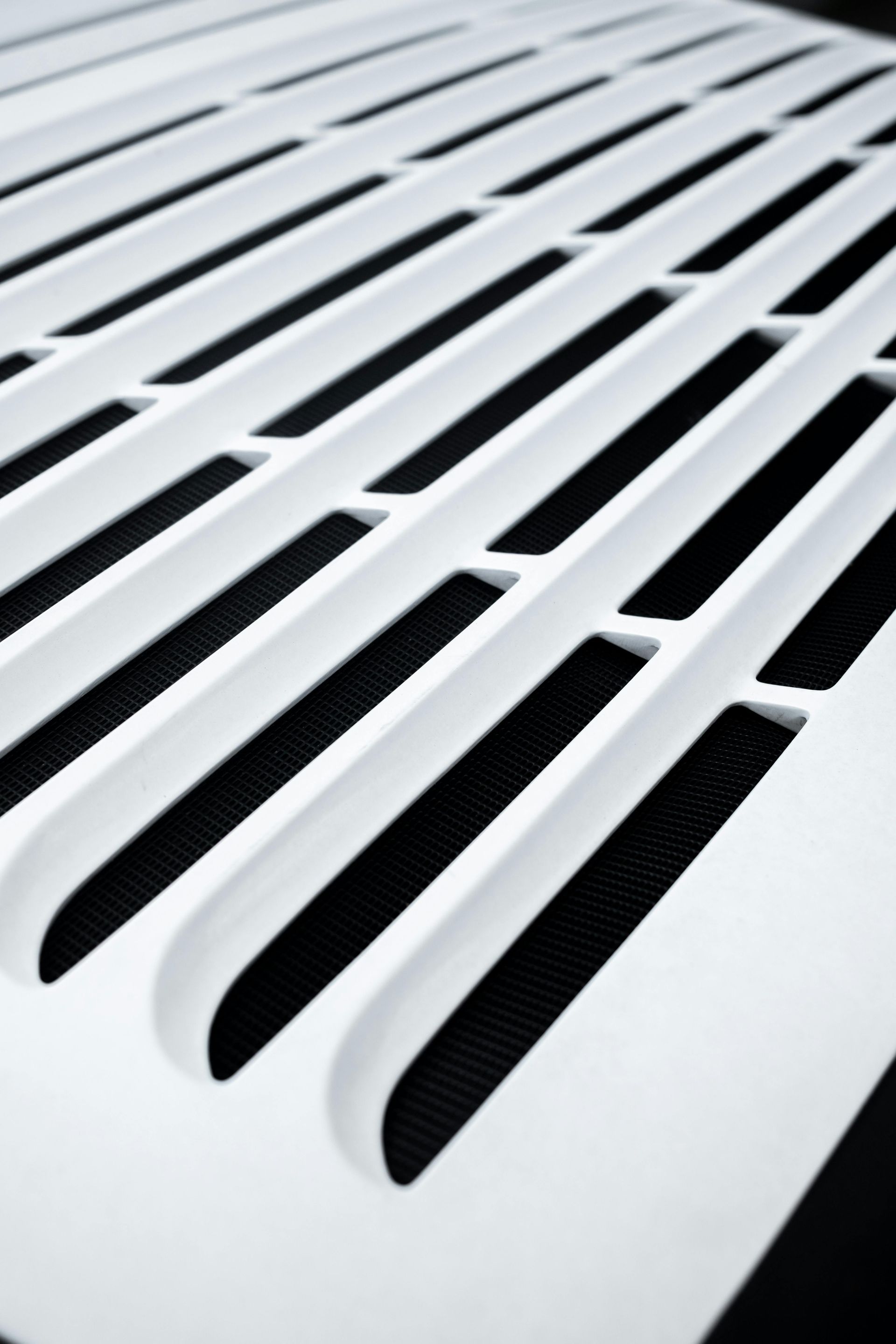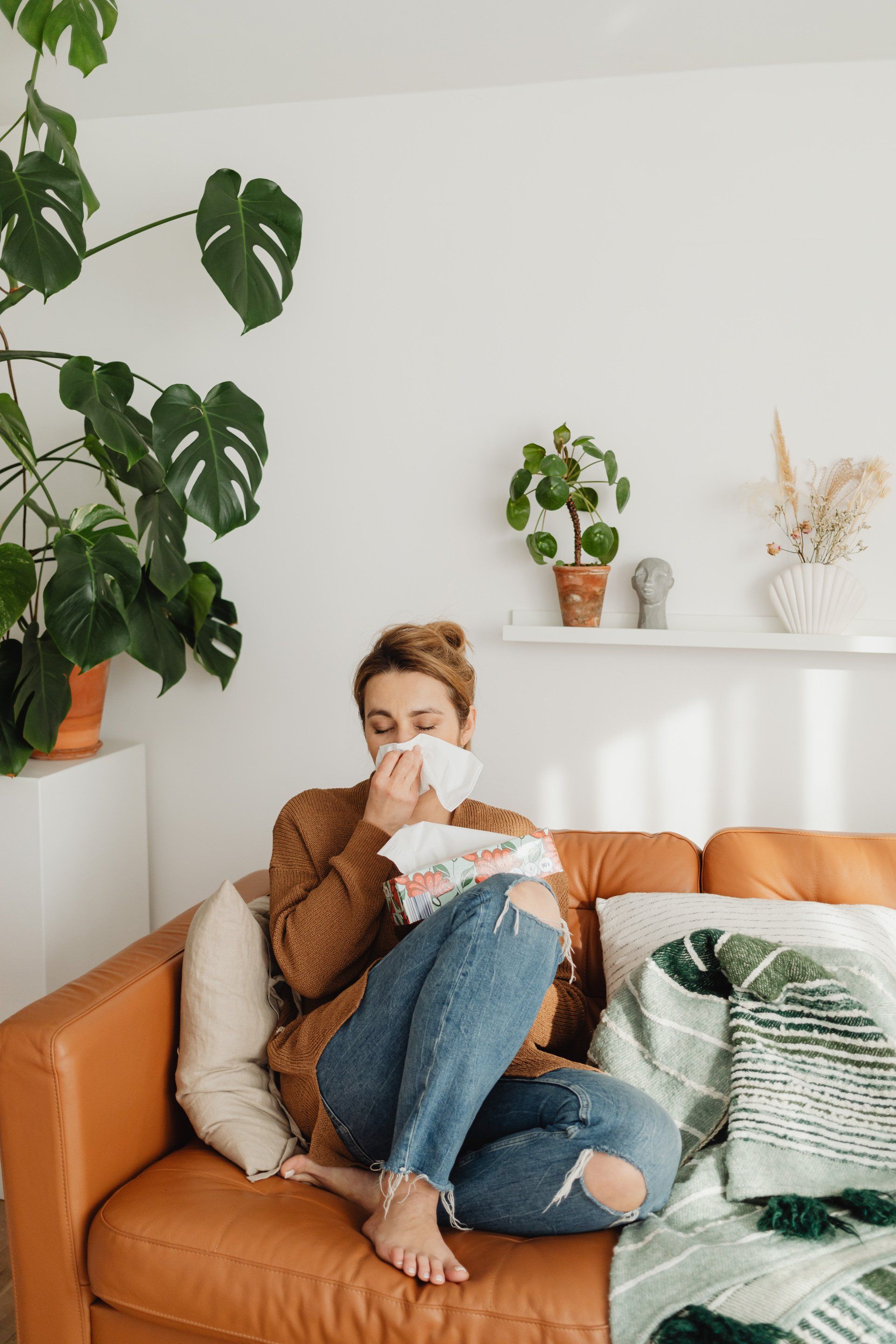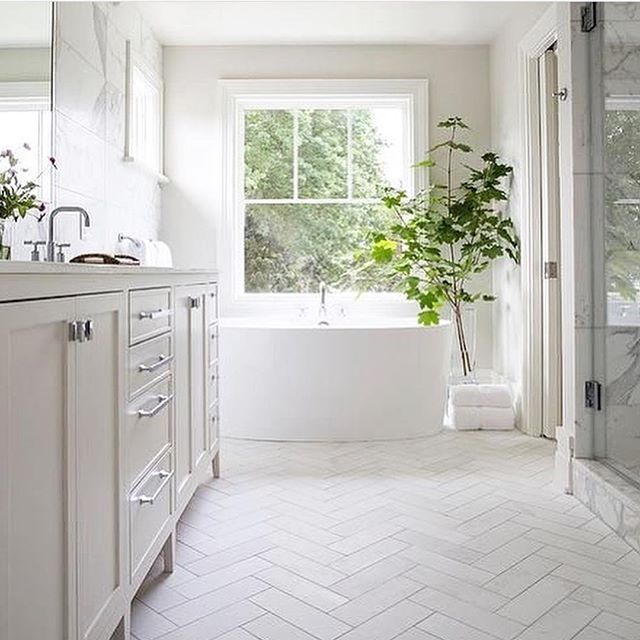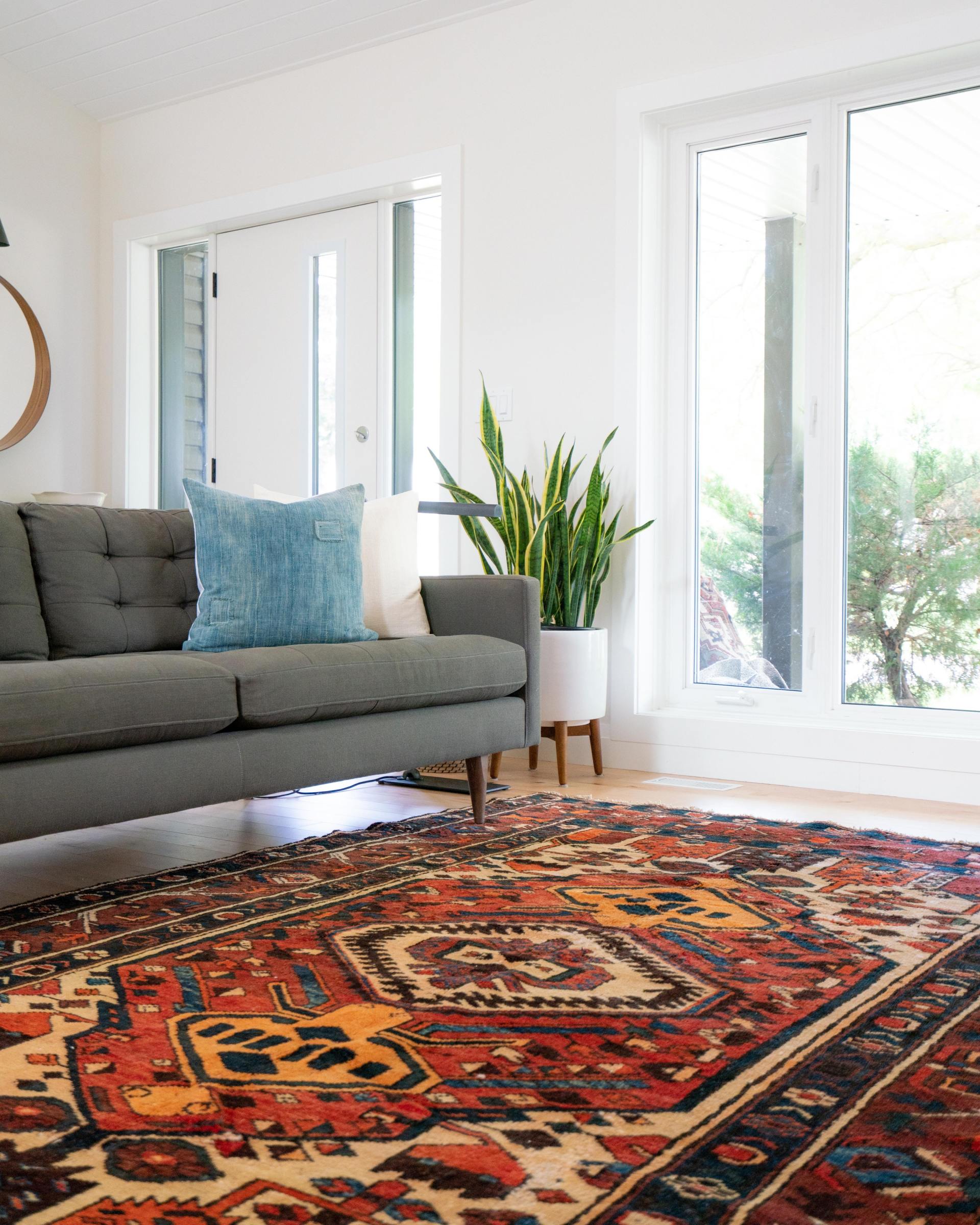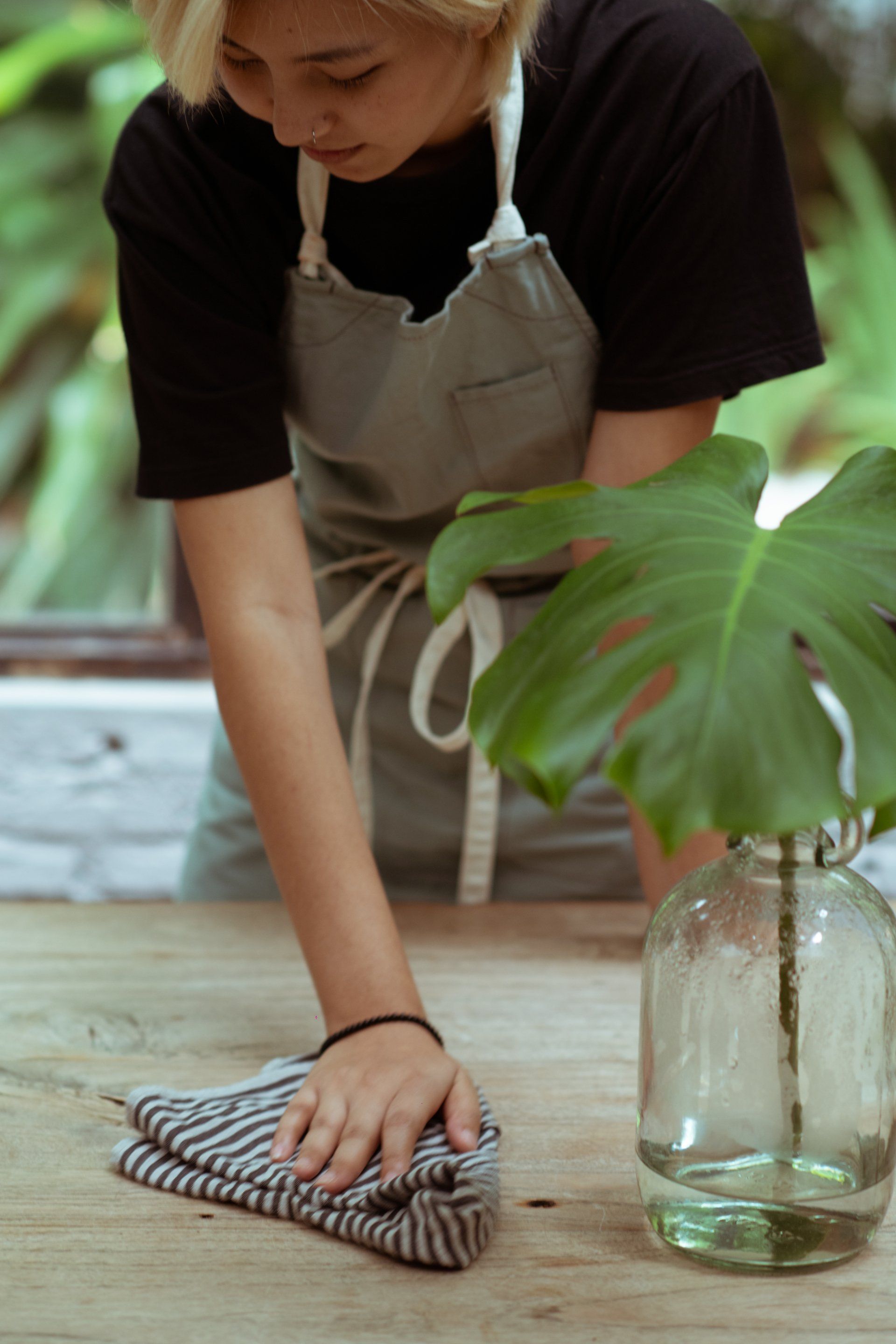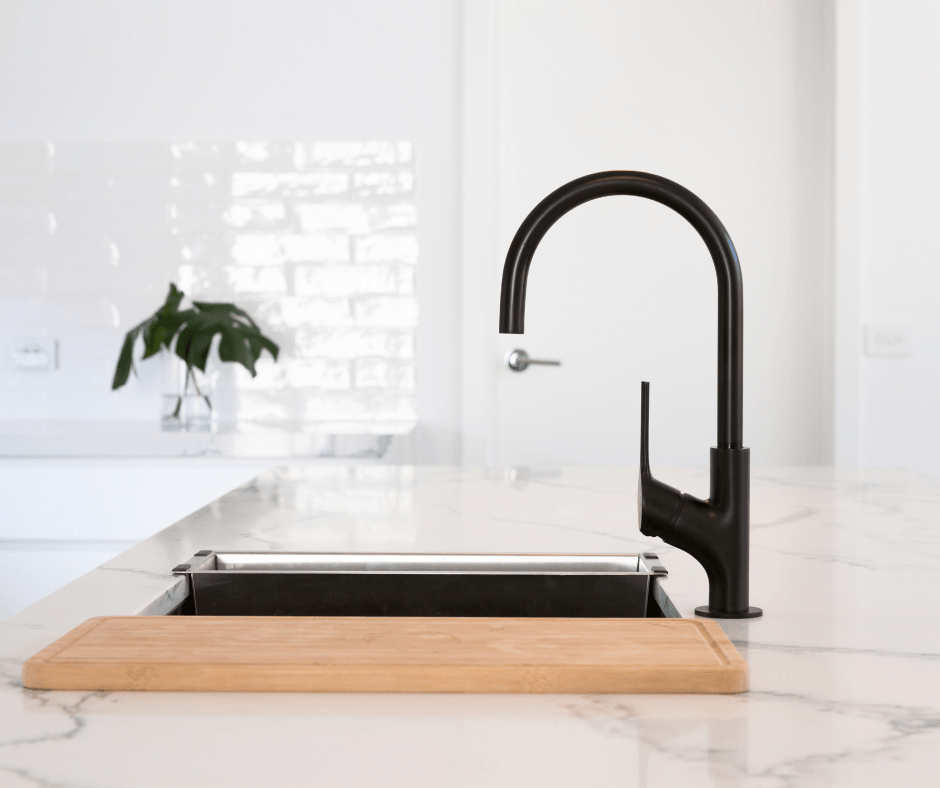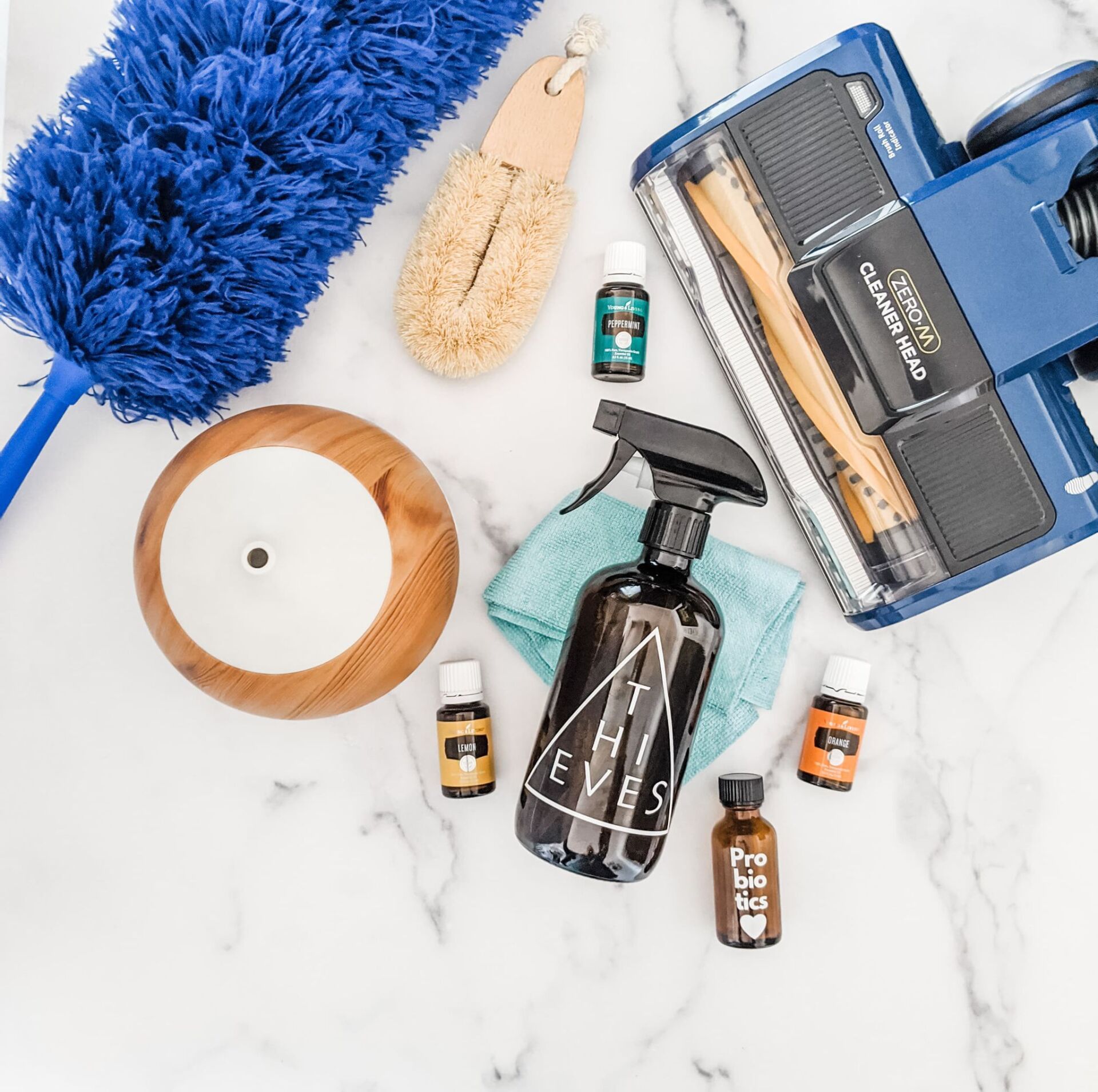How to Clean Patio Furniture
The Organic Way
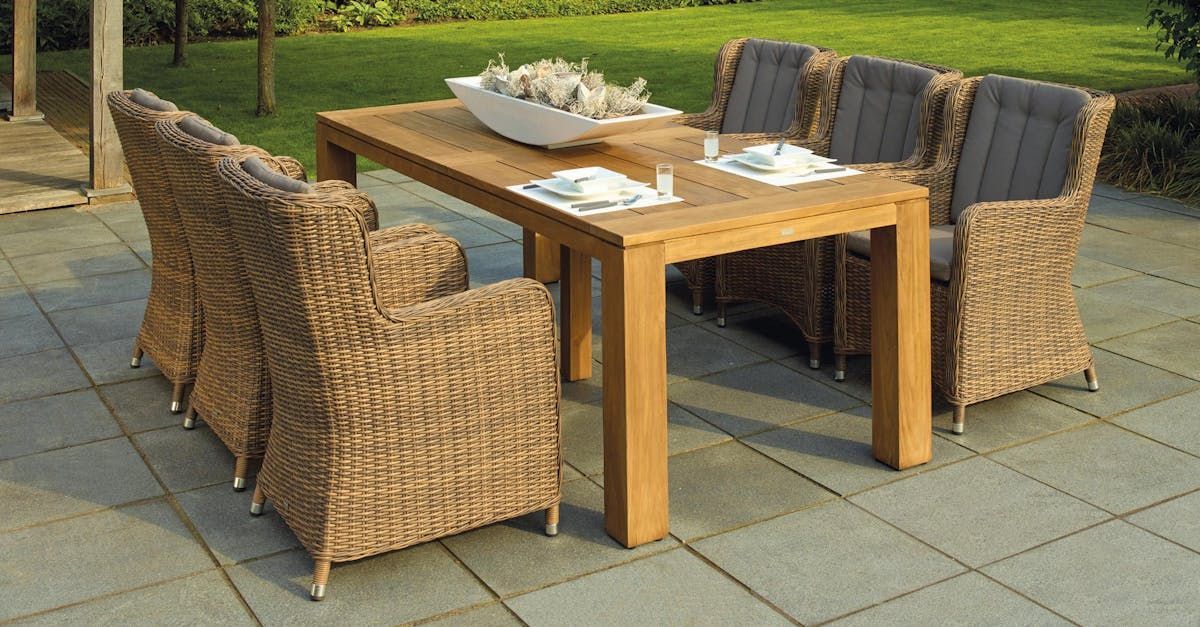
Patio furniture often takes a beating from the elements, whether it’s sun, rain, or dust. Over time, dirt, mildew, and stains can accumulate, making your outdoor space look less inviting. Fortunately, you can clean your patio furniture naturally using organic, non-toxic methods that are safe for your family, pets, and the environment. Here’s how to effectively clean different types of patio furniture, from wood and metal to plastic and fabric, the organic way.
1. Cleaning Wooden Patio Furniture
Wooden patio furniture requires regular care to prevent mildew, fading, and wear from moisture. Organic cleaning methods can keep the wood looking fresh and protected without harsh chemicals.
- Step 1: Dust and Debris Removal
Start by wiping down the furniture with a soft brush or cloth to remove dirt, dust, and cobwebs. - Step 2: Clean with Castile Soap
Mix a solution of warm water and castile soap (a gentle, vegetable-based soap) in a bucket. Dip a soft cloth or sponge into the soapy water and gently scrub the wooden surfaces. For stubborn stains or mildew, use a soft-bristle brush. - Step 3: Rinse and Dry
Rinse the furniture with clean water, using a hose or a damp cloth. Dry the furniture with a clean towel to prevent moisture from soaking into the wood. - Step 4: Condition with Oil
To protect your wooden patio furniture from cracking or fading, apply a natural oil like linseed or teak oil. Rub a small amount of oil into the wood using a cloth, then wipe away any excess. This step helps keep the wood moisturized and resistant to outdoor elements.
2. Cleaning Metal Patio Furniture
Metal furniture is durable but can develop rust or discoloration if not properly maintained. Regular cleaning with organic ingredients will keep it looking sleek and rust-free.
- Step 1: Dust and Wipe Down
Use a dry microfiber cloth to remove any loose dirt, dust, or cobwebs from the metal surfaces. - Step 2: Baking Soda Scrub for Rust
If you spot any rust, make a paste using baking soda and water. Apply the paste to the rust spots and scrub gently with a soft-bristle brush. Baking soda is abrasive enough to remove rust without damaging the metal. - Step 3: Vinegar Solution for General Cleaning
For a more thorough clean, mix equal parts white vinegar and water in a spray bottle. Spray the solution onto the metal surfaces and wipe with a cloth. Vinegar helps cut through grime and kills bacteria without the need for harsh chemicals. - Step 4: Dry Thoroughly
After cleaning, dry the metal furniture completely to prevent water spots or further rusting.
3. Cleaning Plastic Patio Furniture
Plastic furniture is easy to clean but can fade or develop a chalky residue if exposed to the sun for extended periods. Organic cleaning methods can restore its color and shine.
- Step 1: Wash with Natural Dish Soap
Mix warm water with a few drops of natural dish soap in a bucket. Use a sponge or cloth to scrub the plastic surfaces, paying extra attention to any dirt or grime buildup. - Step 2: Baking Soda for Stubborn Stains
For any stains or discoloration, sprinkle baking soda directly onto the affected areas and scrub gently with a sponge or cloth. Baking soda helps to lift stains without scratching the plastic. - Step 3: Rinse and Dry
Rinse the furniture with clean water and let it air dry in the sun. - Step 4: Polish with Olive Oil
To restore shine to faded plastic furniture, rub a small amount of olive oil onto the surface with a cloth. This natural method adds a subtle sheen and protects the plastic from UV damage.
4. Cleaning Fabric Cushions and Upholstery
Outdoor cushions and fabric upholstery often attract dirt, mildew, and stains. Using organic methods, you can keep your cushions fresh and free of harmful chemicals.
- Step 1: Vacuum or Shake Off Debris
Start by vacuuming the cushions or shaking them out to remove loose dirt, leaves, and dust. - Step 2: Make an Organic Cleaning Solution
Mix warm water with a few drops of liquid castile soap and a tablespoon of baking soda. For extra freshness, add a few drops of essential oil like lavender or tea tree, both of which have natural antibacterial properties. - Step 3: Scrub the Fabric
Dip a soft-bristle brush or sponge into the cleaning solution and scrub the fabric gently. Focus on any stained areas but be careful not to over-soak the cushions. - Step 4: Rinse and Air Dry
Use a damp cloth to rinse off the cleaning solution. Let the cushions air dry in the sun, turning them over halfway through to ensure they dry evenly.
5. Cleaning Wicker Patio Furniture
Wicker furniture adds a rustic charm to your outdoor space, but it can collect dust and dirt in the intricate weaves. Organic cleaning methods can help keep the wicker in top shape.
- Step 1: Dust with a Brush
Use a soft brush or vacuum cleaner attachment to remove dust and debris from the wicker. Be gentle to avoid damaging the weave. - Step 2: Clean with a Vinegar Solution
Mix equal parts white vinegar and water in a spray bottle. Lightly spray the wicker furniture and wipe it down with a soft cloth. Vinegar is a natural disinfectant that helps remove dirt and mildew without leaving harmful residues. - Step 3: Rinse and Dry
Rinse with a damp cloth and allow the wicker furniture to air dry in a shaded area. Avoid placing wicker in direct sunlight for long periods, as it can cause the material to become brittle.
6. Maintaining Your Patio Furniture Naturally
To keep your patio furniture looking great all year round, regular maintenance is key. Cover your furniture during harsh weather, and store fabric cushions indoors when not in use. Always opt for organic cleaning methods to avoid exposing your furniture—and your family—to unnecessary chemicals. These natural solutions are just as effective and much safer for the environment.
The recommendations and recipes provided on the Organically Maid Blog are intended for informational purposes only. Please use caution and consult with a professional if you have any concerns or allergies. Organically Maid is not liable for any adverse effects or damages that may result from following the recommendations or recipes shared on this blog. Always follow manufacturer's recommendations and proceed at your own risk.
Blog
